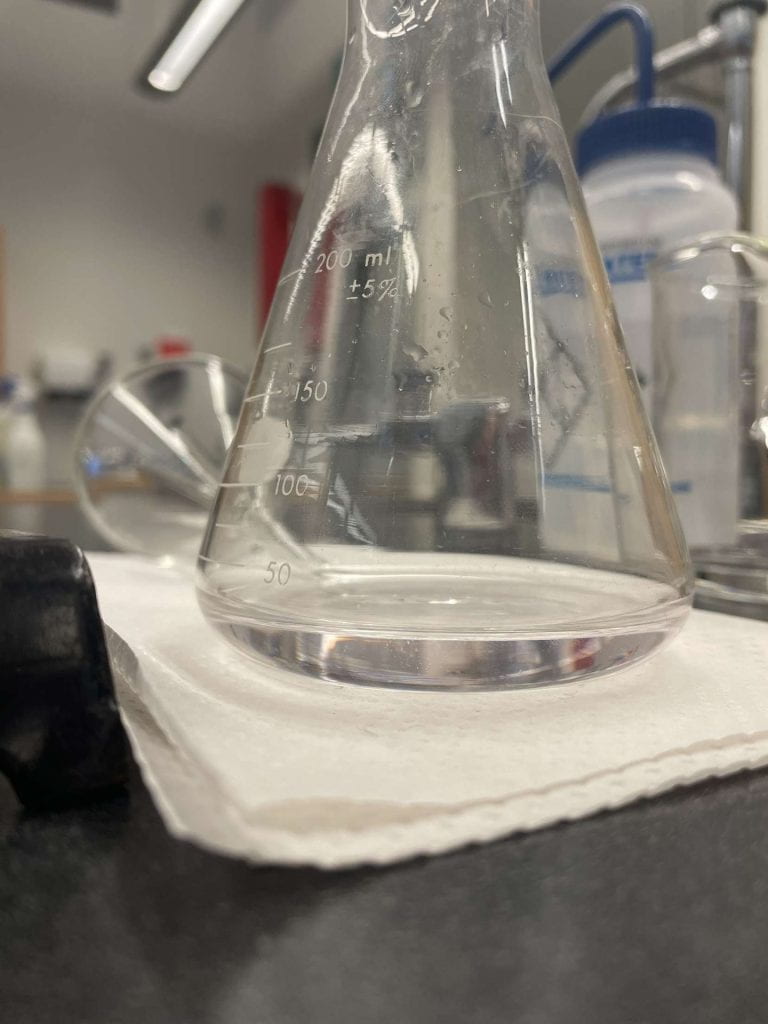
Curricular Competency Reflection
The slow addition of a solution with a known concentration (sodium hydroxide) to a solution with an unknown concentration (hydrochloric acid), was used to calculate the molarity of hydrochloric acid. The end point in a titration is when the reaction is complete. As an indicator was used, the finish line of the titration was when the solution stayed a pale pink for at least 30 seconds. Within both trials an average of 14.14 mL +/- 0.20mL was used in the titration.
Core Competency Reflection
During this lab I actively supported and encouraged my peers. I created a collaborative and upbringing environment. By thinking back to in class lessons and activities I applied that knowledge in the lab to connect the strategies upon accuracy with my partner. By emphasizing respect and inclusivity I allowed my partner to speak their voice and thoughts creating a sense of belonging. Moving forward I plan to enhance my collaboration skills and involve all team members diverse thoughts and opinions.

Initial volume 0.11mL +/- 0.05mL (trial 1)

Initial Volume 0.00mL +/- 0.05mL (trial 2)

Final Volume 14.03mL +/- 0.05 mL (trial 1, trial 2 was not taken picture of)

